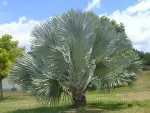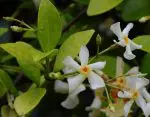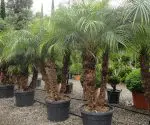This post contains affiliate links. If you buy something from one of our links we may earn a commission. Thanks
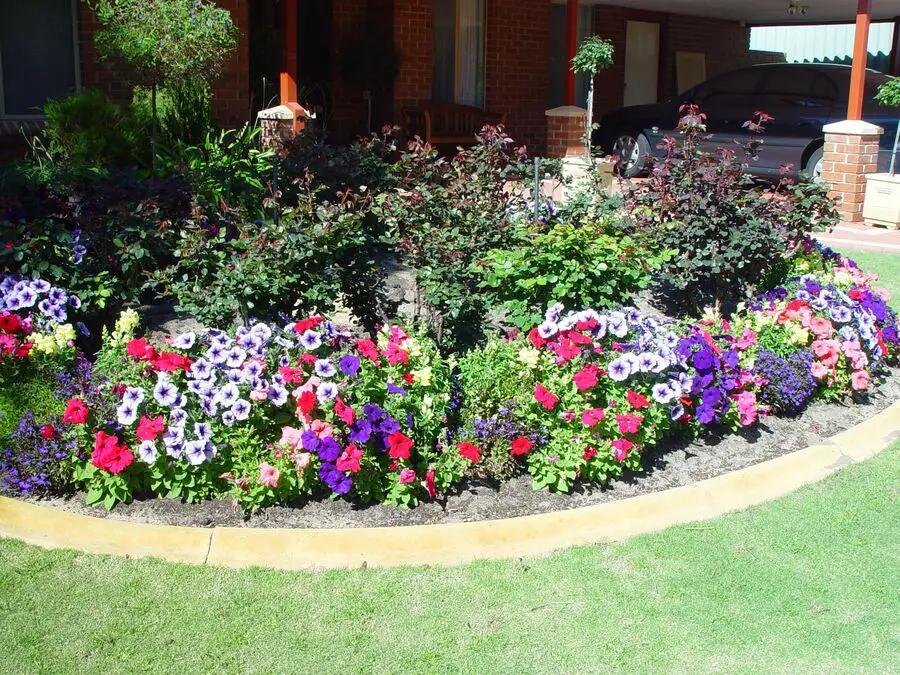 Looking for inspiration for your backyard garden? Check out our ultimate guide to Backyard Gardening Ideas! From plant selection to sustainable practices, we’ve got you covered. Let’s get growing!
Looking for inspiration for your backyard garden? Check out our ultimate guide to Backyard Gardening Ideas! From plant selection to sustainable practices, we’ve got you covered. Let’s get growing!
I. Introduction – Welcome to Backyard Gardening Ideas
Transform your backyard into a verdant oasis by selecting a mix of perennial and annual plants to ensure year-round color. Incorporate a vegetable garden to grow fresh produce, and add a compost bin to recycle kitchen waste into nutrient-rich soil. Consider adding a water feature or bird feeder to attract local wildlife, and don’t forget to include comfortable seating areas to relax and enjoy the beauty of your outdoor space.
Welcome to our post on Backyard Gardening Ideas! Backyard gardening is an excellent way to create a beautiful and functional outdoor space that you can enjoy all year round.
Not only does it add value to your property, but it can also provide a relaxing and peaceful oasis that allows you to connect with nature.
Whether you’re a seasoned gardener or a beginner, there’s something truly special about growing your own plants, fruits, and vegetables.
So let’s explore some creative and inspiring ideas for your backyard garden and get started on your journey to creating your very own outdoor haven!
So welcome to our ultimate guide on Backyard Gardening Ideas. If you’re looking to spruce up your outdoor space with some greenery, or even if you’re a seasoned gardener looking for some fresh inspiration, you’re in the right place.
In this post, we’ll cover everything from planning and design to plant selection and care, as well as some fun DIY projects and specialty gardens to try. So grab your gardening gloves and let’s dive in!
II. Planning Your Garden
Before you dive into creating your backyard garden, it’s essential to start with some proper planning.
Choosing the right location, type of garden, and plants that will thrive in your climate and soil type are all important considerations.
Don’t worry if you’re feeling a bit overwhelmed – we’ve got you covered with some practical tips and tricks to make the planning process a breeze.
In this section, we’ll cover everything you need to know about planning your garden and help you create a solid foundation for your green space.
So, let’s grab a notebook and get started!
Choosing the Right Location: Factors to Consider
When it comes to creating a backyard garden, location is everything. You’ll want to choose an area that gets plenty of sunlight and has good soil drainage.
Make sure to take note of any trees, buildings, or other structures that may cast shadows and affect the amount of sunlight your plants receive.
Additionally, consider factors like accessibility and convenience. You’ll want to choose a location that’s easily accessible for watering, weeding, and harvesting.
Deciding on Your Garden Type: Vegetable, Flower, Herb, or a Combination?
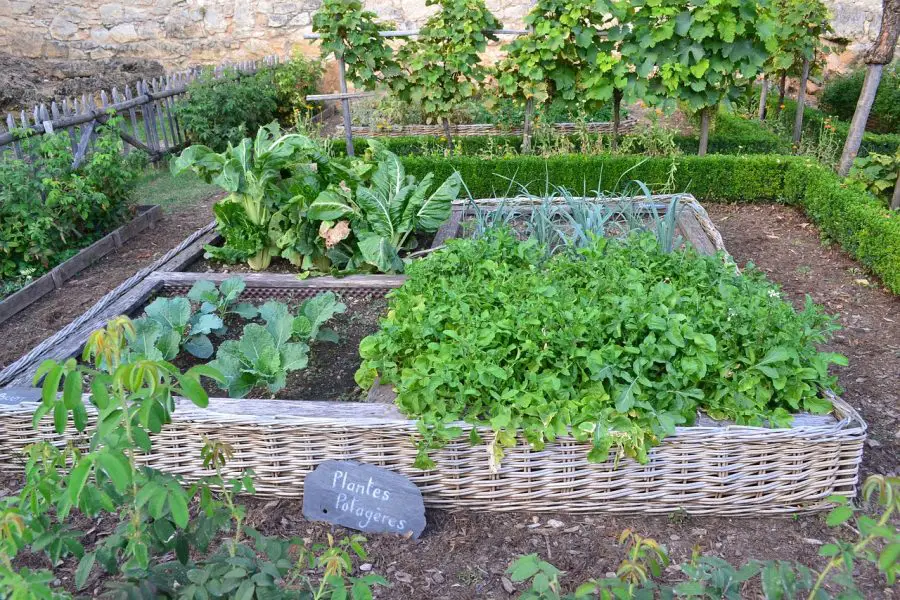
The type of garden you choose will depend on your personal preferences and goals.
Are you interested in growing your own food? A vegetable garden might be the way to go.
Are you looking to create a colorful oasis filled with blooms? A flower garden could be just what you need.
Maybe you’re interested in using your garden for culinary purposes. An herb garden might be a perfect choice.
Of course, you could also combine different types of gardens to create a unique and multifunctional space.
Selecting Plants for Your Climate and Soil Type: Tips and Tricks
Choosing the right plants for your climate and soil type is crucial to the success of your garden.
Before selecting any plants, make sure to research which varieties will thrive in your local climate.
You’ll also want to take note of your soil type, as some plants prefer sandy soil while others thrive in more loamy or clay-like soils.
Additionally, consider factors like plant spacing and sun exposure, as these can also affect the health and growth of your plants.
Don’t be afraid to experiment with different varieties and see which ones work best for your garden!
III. Garden Design
Once you’ve chosen the perfect location and type of garden for your backyard, it’s time to start thinking about design.
A well-designed garden can be both beautiful and functional, creating a space that’s perfect for relaxing and entertaining.
In this section, we’ll cover everything you need to know about garden design, from creating a layout to choosing the right materials and incorporating different garden elements.
Get ready to unleash your creativity and transform your backyard into a stunning outdoor oasis!
Garden Design Tips
Designing a garden can be a fun and rewarding process, but it can also be overwhelming.
Here are some garden design tips to help you create a beautiful and functional outdoor space:
Consider your space: Take into account the size, shape, and features of your space, such as trees, pathways, and existing structures.
Determine your garden style: Decide on a style that fits your taste and the architecture of your home, whether it’s formal, informal or a mix of both.
Create a focal point: Choose a centerpiece for your garden, such as a statue, water feature, or a grouping of plants.
Plan for year-round interest: Incorporate plants with varying textures, colors, and heights to create interest and visual appeal throughout the seasons.
Think about function: Consider how you will use the space, whether it’s for entertaining, relaxation, or growing vegetables.
Use plant groupings: Group plants with similar needs, such as water and sunlight, to make maintenance easier.
Add lighting: Lighting can create ambiance and highlight focal points in your garden.
Incorporate hardscaping: Use hardscaping elements such as pavers, stones, or gravel to add texture and visual interest to your garden.
Use vertical space: Incorporate trellises, arches, or vertical planters to maximize growing space and add height to your garden.
Keep it simple: Avoid over-complicating your garden design with too many features or plant varieties. Instead, choose a few key elements and let them shine.
By following these garden design tips, you can create a beautiful and functional outdoor space that reflects your personal style and meets your needs.
Designing a Garden Layout: Factors to Consider
When it comes to designing your garden layout, there are a few key factors to keep in mind. Consider looking into permaculture gardening.
First and foremost, consider the size and shape of your space.
You’ll want to create a layout that maximizes your available space while still leaving room for your plants to grow.
Additionally, think about the visual appeal of your garden.
Consider incorporating features like symmetry, balance, and focal points to create a cohesive and aesthetically pleasing design.
Adding Garden Elements: Paths, Seating Areas, Water Features
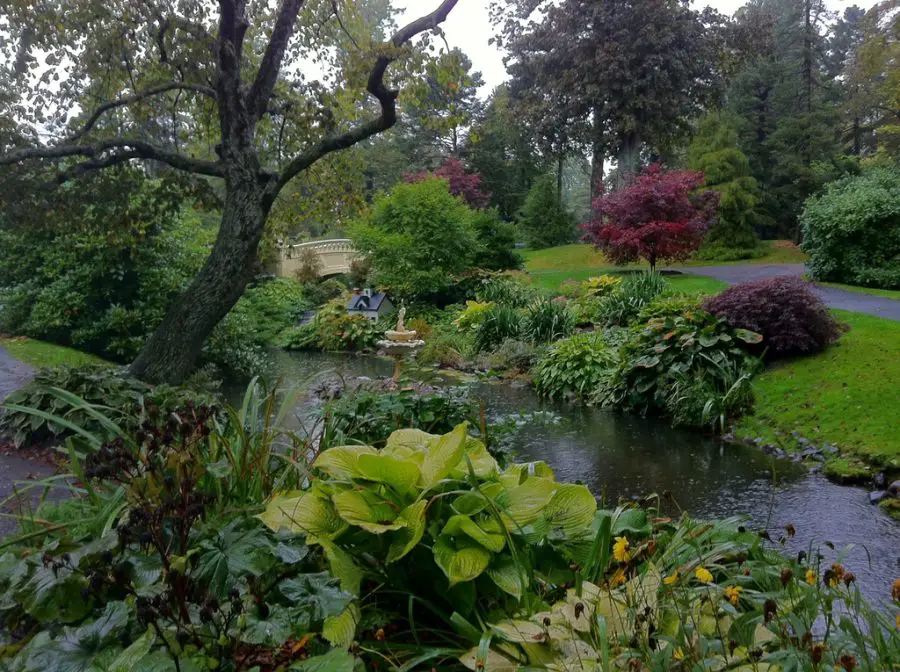
Incorporating additional elements like paths, seating areas, and water features can add an extra level of functionality and visual interest to your garden.
Paths can help guide visitors through your garden and provide easy access for maintenance tasks like weeding and watering.
Seating areas are perfect for relaxing and enjoying your garden, while water features like fountains or ponds can add a soothing and tranquil element.
Choosing Materials for Your Garden: Paving Stones, Mulch, Edging
When it comes to choosing materials for your garden, there are a wide variety of options to choose from.
Paving stones can be used to create a durable and visually appealing pathway, while mulch can help retain moisture in your soil and prevent weed growth.
Edging can be used to create clean lines between different areas of your garden and add a finishing touch to your overall design.
Consider factors like durability, cost, and visual appeal when choosing materials for your garden.
IV. Plant Selection and Care
Once you’ve planned and designed your backyard garden, it’s time to move on to the fun part – selecting and caring for your plants!
Whether you’re a seasoned gardener or just starting out, this section will cover everything you need to know about selecting the right plants for your garden, as well as tips and tricks for ensuring they thrive.
From watering and fertilizing to pruning and pest control, we’ve got you covered!
A backyard garden is a beautiful and rewarding addition to any home, but it does require a bit of effort to keep it thriving.
In this section, we’ll cover everything you need to know about selecting the right plants for your garden, caring for them properly, and dealing with common problems that may arise.
Selecting the Right Plants for Your Garden: Annuals vs. Perennials, Native vs. Exotic
Choosing the right plants for your garden is crucial to its success.
Consider factors like whether you want annuals or perennials, native or exotic species, and what colors and textures you want to see in your garden.
It’s also important to think about how much sunlight and water your plants will need, and whether they will thrive in your climate.
If you have a shady garden consider growing Hostas in pots. The beauty of container plants is being able to move them into more or less sunlight.
Understanding How to Care for Your Plants: Watering, Fertilizing, Pruning
Once you’ve selected the right plants for your garden, it’s important to know how to care for them properly.
This includes understanding how much water and fertilizer your plants need, as well as how to prune them to promote healthy growth.
Regular maintenance is key to keeping your garden looking its best.
Preventing Common Garden Problems: Pests, Diseases, Weeds
Despite your best efforts, your garden may still face problems like pests, diseases, and weeds.
The key to preventing these issues is to keep your garden healthy and well-maintained.
This includes regular weeding, proper watering and fertilization, and monitoring your plants for any signs of trouble.
If you do notice a problem, there are a variety of natural and chemical treatments you can use to address it.
V. Sustainable Gardening
Welcome to the section on sustainable gardening!
In this section, we’ll explore how to create a garden that not only looks beautiful but also supports a healthy ecosystem.
Sustainable gardening practices can help reduce waste, conserve resources, and promote biodiversity.
Whether you’re an experienced gardener or just starting out, there are plenty of simple and effective ways to make your garden more sustainable. Let’s dive in!
A sustainable approach to gardening can benefit not only your backyard oasis but also the planet.
By using environmentally-friendly practices and materials, you can reduce your carbon footprint and promote a healthy ecosystem.
Here are some key points to consider:
Using Environmentally-Friendly Gardening Practices: Composting, Natural Pest Control, Water Conservation
Composting is a great way to reduce waste and create nutrient-rich soil for your plants.
Natural pest control methods like companion planting and beneficial insects can help keep pests at bay without harmful chemicals.
Water conservation techniques like drip irrigation and rainwater harvesting can also help reduce water usage and save money on your water bill.
Choosing Sustainable Materials and Products: Rain Barrels, Organic Fertilizers, Eco-Friendly Garden Tools
Sustainable materials and products can help you further reduce your environmental impact.
Rain barrels can collect rainwater for use in your garden, while organic fertilizers can provide essential nutrients without harmful chemicals.
Eco-friendly garden tools made from recycled or renewable materials can also help reduce waste and pollution.
VI. Small Space Gardening
A warm welcome to readers interested in small-space gardening! Just because you have limited outdoor space doesn’t mean you can’t enjoy the benefits of growing your own plants.
Don’t let limited outdoor space stop you from cultivating a beautiful garden.
With the right approach, small spaces can yield big results. In this section, we’ll explore the ins and outs of small-space gardening and provide tips and tricks for making the most of your available area.
Whether you have a balcony, a small patio, or just a windowsill, you can create a lush and thriving garden that brings joy and beauty to your home.
With a little creativity and planning, you can create a beautiful and functional garden in even the smallest of areas.
In this section, we’ll cover tips and tricks for designing a garden for a small space, maximizing your space with vertical gardening techniques, and choosing the right containers for your garden. Let’s get started!
A. Designing a Garden for a Small Space: Tips and Tricks
When designing a garden for a small space, it’s important to prioritize function and purpose.
Consider what you want to achieve with your garden and plan accordingly.
Do you want to grow herbs for cooking, create a relaxing outdoor space, or add some greenery to your balcony or patio?
Once you have a clear vision, think creatively about how to maximize your space.
Consider using vertical gardening techniques, incorporating hanging planters or trellises, and choosing plants that can thrive in small containers.
Maximizing Your Space with Vertical Gardening Techniques
Vertical gardening is a great way to maximize your space and add visual interest to your garden.
You can use trellises, hanging planters, or even repurpose items like pallets or ladders to create a vertical garden.
This technique works especially well for climbing plants like tomatoes, cucumbers, and beans, as well as trailing plants like ivy and ferns.
Just make sure to choose a sturdy support structure and give your plants enough space to grow.
Choosing the Right Containers for Your Garden: Types and Materials
Choosing the right containers is crucial for small-space gardening.
Consider the size and depth of the container, as well as the material. Plastic containers are lightweight and affordable but may not be as durable as ceramic or terra cotta pots.
Make sure to choose a container with good drainage to prevent waterlogging, and consider using self-watering containers to make watering easier.
Finally, don’t be afraid to get creative and repurpose items like tin cans or old buckets as planters!
VII. Garden DIY Projects
Are you looking for ways to add some personality and flair to your backyard garden?
Look no further than the world of DIY garden projects! Whether you’re looking to build your own raised garden bed, create unique planters from recycled materials, or add a touch of whimsy with homemade garden art, there are endless opportunities for creative expression in the world of garden DIY.
Plus, not only can these projects be fun and fulfilling, but they can also save you money compared to buying pre-made garden decorations and structures.
A backyard garden can be more than just a place to grow plants; it can also be a space for creativity and DIY projects.
In this section, we’ll cover some exciting and practical garden projects that you can tackle on your own.
From building raised garden beds to creating beautiful garden art and making your own compost bin, there are plenty of ways to add a personal touch to your backyard oasis.
Some Garden DIY Projects
If you enjoy working on DIY projects and have a garden, there are plenty of fun and creative projects you can tackle to improve your outdoor space.
Here are some garden DIY project ideas to consider:
Build a raised garden bed: Raised garden beds are a great way to grow plants in a small space, and building one can be a fun and rewarding project.
Create a vertical garden: Use a trellis or wall-mounted planter to create a vertical garden, adding greenery to a small space or a blank wall.
Build a garden bench: Create a cozy seating area by building a bench using wood pallets or other materials.
Make a garden path: Use pavers, stones, or gravel to create a pathway through your garden, adding a functional and decorative element.
Build a compost bin: A compost bin is a great way to recycle yard waste and create nutrient-rich soil for your plants. You can build one using wood or repurpose an old trash can.
Create a garden art piece: Add a unique touch to your garden by creating a garden art piece, such as a mosaic stepping stone, birdhouse, or wind chime.
Build a herb garden: Use a window box or a series of small planters to create a herb garden, allowing you to grow fresh herbs for cooking right outside your door.
Make a bird feeder: Attract birds to your garden by creating a homemade bird feeder using materials such as a plastic bottle, wood, or clay.
Install a rain barrel: Save water and reduce your water bill by installing a rain barrel to collect rainwater for your garden.
Build a garden shed: If you need storage space for garden tools and supplies, building a garden shed can be a fun and useful project.
These are just a few garden DIY project ideas to get you started. With some creativity and effort, you can improve your garden while also enjoying the process of creating something with your own hands.
Making Your Own Compost Bin: Simple and Effective Methods
Composting is an essential practice for sustainable gardening, as it reduces waste and provides your plants with valuable nutrients.
Making your own compost bin is a straightforward and cost-effective way to get started with composting.
In this section, we’ll provide you with some simple and effective methods for building your own compost bin, including using wooden pallets, creating a wire mesh bin, and using a plastic container.
Making Your Own Compost Bin
Composting is a great way to reduce waste and create nutrient-rich soil for your garden.
Here are some simple and effective methods for making your own compost bin:
Wooden Pallets Compost Bin
Using wooden pallets, create a compost bin by fastening the pallets together with screws or wire.
The open slats of the pallets allow for air circulation and easy access to the compost pile. You can add a lid on top to keep out rainwater and animals.
Plastic Storage Container Compost Bin
Using a plastic storage container, drill holes in the lid and sides for air circulation.
Cut out a portion of the bottom and replace it with wire mesh or hardware cloth to allow for drainage.
You can place the container on a tray or in a larger container to collect any excess liquid.
Wire Mesh Compost Bin
Using wire mesh or hardware cloth, create a circular or rectangular shape and secure the ends together with wire or zip ties.
You can add multiple layers of wire mesh for a larger compost bin. Use stakes or poles to anchor the bin to the ground.
Wooden Box Compost Bin
Using wood boards, create a box-shaped compost bin by fastening the boards together with screws or nails.
You can add a lid on top to keep out rainwater and animals. Make sure to leave gaps between the boards for air circulation.
Compost Tumbler
A compost tumbler is a container that rotates to mix the compost materials together.
You can buy a pre-made tumbler or make one using a plastic drum or large bucket. Drill holes in the sides for air circulation and add a handle or crank to rotate the tumbler.
Composting with a Compost Sak
Discover the ease of composting with a Compost Sak! Perfect for small spaces, this fabric bin turns kitchen scraps into nutrient-rich soil for your garden.
No matter which method you choose, make sure to layer your compost materials, such as food scraps, yard waste, and dry materials like leaves and straw.
Keep the compost moist and turn it occasionally to aerate the materials. With time, you will have nutrient-rich compost to add to your garden soil.
Building Raised Garden Beds: Step-by-Step Guide
Raised garden beds are an excellent way to add structure and organization to your garden while also improving soil drainage and reducing the risk of pests and weeds.
In this section, we’ll walk you through the process of building your own raised garden bed, including selecting the right materials, planning the layout, and assembling the bed.
Building Raised Garden Beds: Step-by-Step Guide
Raised garden beds are a great way to grow plants, especially if you have poor soil or limited space. Here is a step-by-step guide to building raised garden beds:
Materials:
Wood boards (cedar or redwood recommended)
3-inch screws
Corner braces
Soil
Plants or seeds
Tools:
Circular saw or hand saw
Power drill
Measuring tape
Level
Shovel
Step 1: Choose a Location
Choose a flat area with good drainage and plenty of sunlight. Clear the area of any grass or weeds.
Step 2: Determine Size and Height
Decide on the size and height of your raised bed. A common size is 4 feet wide by 8 feet long. The height can vary, but 12-18 inches is a good range.
Step 3: Cut Boards
Using a saw, cut the wood boards to the desired length for each side of the raised bed.
Step 4: Assemble Sides
Lay out the cut boards on the ground in the shape of the raised bed. Use corner braces to attach the boards at each corner. Make sure the corners are square and use a level to ensure the sides are level.
Step 5: Attach Boards
Using the power drill and screws, attach the boards together to form the sides of the raised bed.
Step 6: Add Soil
Fill the raised bed with soil, leaving about an inch or two of space at the top.
Step 7: Plant
Add plants or seeds to the raised bed, spacing them according to their recommended spacing.
Step 8: Water and Maintain
Water the plants and maintain them according to their specific needs. Be sure to keep the soil moist but not waterlogged.
By following these steps, you can build your own raised garden bed and enjoy the benefits of growing plants in a controlled environment with good soil and drainage. Happy gardening!
Creating Garden Art:
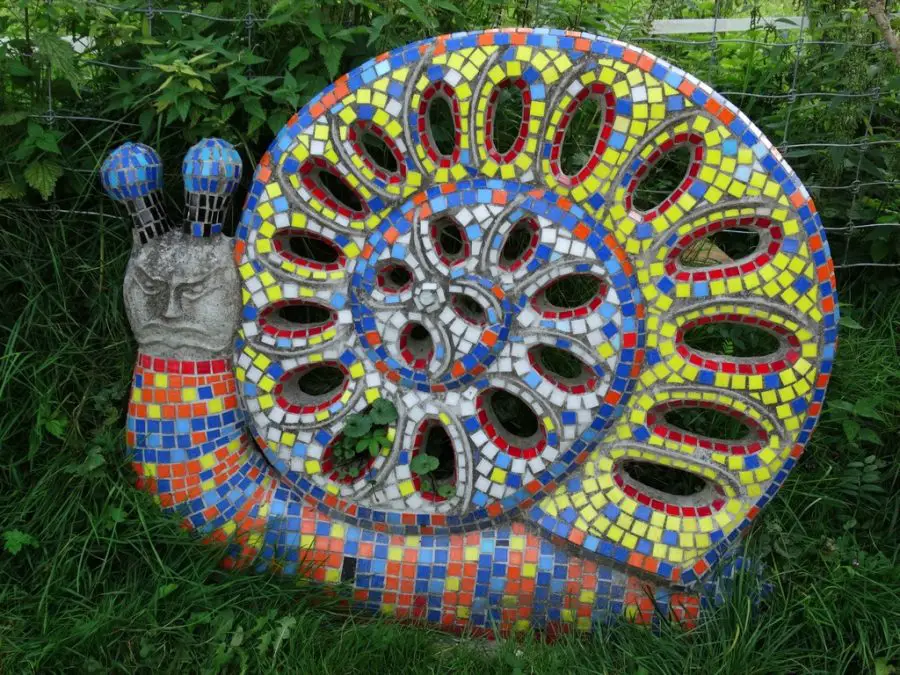
Adding art to your garden is an excellent way to express your creativity and add a unique touch to your outdoor space.
From painting rocks to creating garden sculptures, there are plenty of DIY garden art projects that you can tackle on your own.
In this section, we’ll provide you with some ideas and inspiration to get you started.
Some Garden Art DIY Ideas For Inspiration
Garden art is a great way to add personality and creativity to your outdoor space. Here are some DIY garden art ideas and inspiration to get you started:
Mosaic Stepping Stones Create colorful stepping stones using mosaic tiles, glass beads, or other decorative materials. You can arrange the materials into a pattern or design of your choice.

Birdhouses
Build or paint birdhouses to attract birds to your garden. You can make them in a variety of shapes and sizes to match your garden decor.
Wind Chimes
Make wind chimes using objects such as shells, glass beads, or old silverware. Hang them in a tree or near a seating area to add a relaxing sound to your garden.
DIY Water Fountain
Create a DIY water fountain using a large bowl, pump, and stones. The sound of running water can add a calming effect to your garden.
Garden Sculptures
Make garden sculptures using wire, stone, or other materials. You can create abstract or figurative sculptures that reflect your personal style.
DIY Garden Signs
Create personalized garden signs using wood, paint, or other materials. Write inspiring quotes or the names of your favorite plants or flowers.
Painted Planters
Paint your planters with bright colors or patterns to add a pop of color to your garden. You can use stencils or freehand designs for a unique look.
Recycled Garden Art
Repurpose old items into garden art, such as using an old ladder as a plant stand, or creating a sculpture out of old silverware.
Garden Lighting
Add a magical touch to your garden by using string lights, lanterns, or candles. The soft lighting can create a cozy atmosphere for evening gatherings.
Garden Murals
Paint a mural on a wall or fence in your garden. You can create a landscape or abstract design that enhances your garden’s natural beauty.
These are just a few DIY garden art ideas to get you started. With a little creativity and effort, you can add a personal touch to your garden and create a unique outdoor space.
VIII. Garden Inspiration
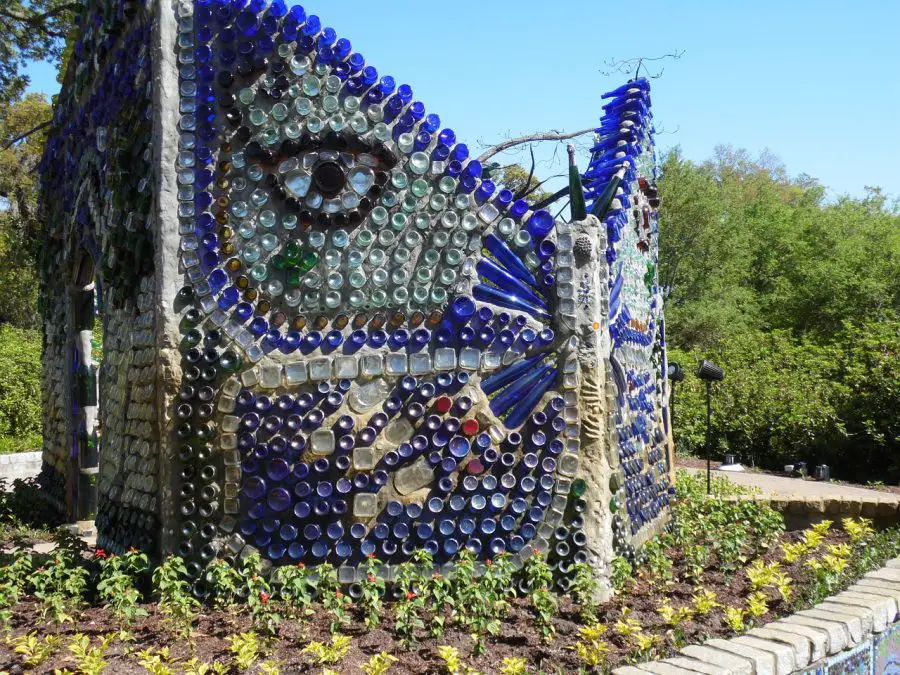
Are you in need of some inspiration for your backyard garden? Look no further! In this section, we’ll explore some creative ideas and innovative designs that will help you transform your outdoor space into a beautiful and functional oasis.
Whether you’re looking for inspiration for your plant selection, garden layout, or DIY projects, we’ve got you covered. So sit back, relax, and let the creativity flow!
A garden is a place of beauty, peace, and creativity, and there’s no limit to the ways in which you can make your garden unique and inspiring.
In this section, we’ll explore a variety of garden inspiration ideas, from unique garden styles from around the world to creative DIY projects using plants and materials.
We’ll also take a look at innovative gardening techniques, such as hydroponics and aquaponics, that allow you to grow plants in new and exciting ways.
Whether you’re an experienced gardener or just getting started, these ideas are sure to inspire you to create a garden that reflects your personal style and vision.
A Brief Overview Of Aquaponics
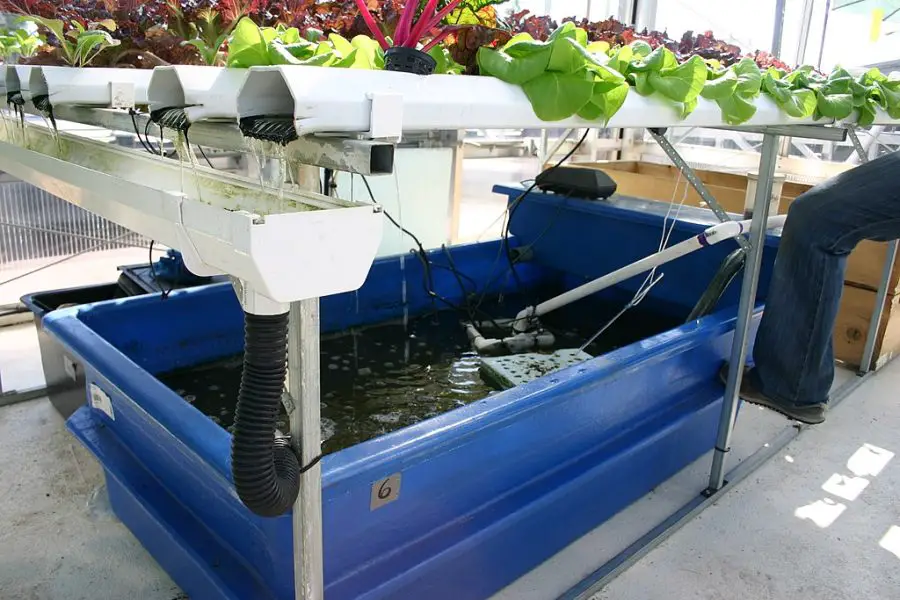
Aquaponics is a sustainable farming system that combines aquaculture (raising fish) with hydroponics (growing plants in water).
In an aquaponics system, fish are kept in a tank where they produce waste.
The waste is then broken down by beneficial bacteria into nutrients that can be used by plants.
The nutrient-rich water is pumped from the fish tank to the plant bed, where the plants absorb the nutrients and purify the water for the fish.
Aquaponics has several advantages over traditional farming methods.
It uses up to 90% less water than conventional farming, as the water is recycled in the closed-loop system.
It also eliminates the need for chemical fertilizers and pesticides, making it a more environmentally friendly option.
Additionally, aquaponics can be done in small spaces, making it a great option for urban and indoor farming.
Some common plants grown in aquaponics systems include lettuce, herbs, and tomatoes.
Tilapia and trout are popular fish choices for aquaponics, as they are hardy and fast-growing.
While aquaponics can be a sustainable and efficient farming method, it does require careful monitoring and maintenance to ensure the balance of nutrients and water quality.
However, with proper care and attention, aquaponics can be a rewarding and productive way to grow fresh produce and fish.
According to Wkipedia: Aquaponics is a food production system that couples aquaculture (raising aquatic animals such as fish, crayfish, snails or prawns in tanks) with hydroponics (cultivating plants in water) whereby the nutrient-rich aquaculture water is fed to hydroponically grown plants.
A Brief Overview Of Hydroponics
Hydroponics is a method of growing plants without soil, where the plant’s roots are instead immersed in a nutrient-rich water solution.
This method allows for the precise control of nutrients, water, and environmental factors such as temperature and lighting.
Hydroponics offers several benefits over traditional soil-based agriculture, including faster growth rates, higher yields, and reduced water usage.
It also allows for the year-round cultivation of crops in any location, regardless of climate or soil conditions.
It is an excellent way to grow vegetables indoors or on a balcony. If you live in an apartment it frees you from needing soil to grow food.
There are several types of hydroponic systems, including deep water culture, nutrient film technique, and drip irrigation.
In deep water culture, the plants are suspended above a tank of nutrient-rich water with their roots submerged in the solution.
In the nutrient film technique, a thin film of water flows over the roots of the plants, delivering nutrients and oxygen.
In drip irrigation, a drip system delivers a controlled amount of nutrient solution to the roots of the plants.
Commonly grown crops in hydroponic systems include lettuce, tomatoes, peppers, and herbs.
The method has also been used to grow other plants, such as strawberries and cannabis.
While hydroponics requires an initial investment in equipment and infrastructure, it can be a highly efficient and productive way to grow fresh produce.
It also offers the potential for more sustainable and environmentally friendly agriculture practices.
IX. Specialty Gardens
Hey there! Are you interested in learning about specialty gardens?
These types of gardens are designed to showcase specific plants or themes and can add an extra layer of beauty and interest to your outdoor space.
In this section, we’ll explore a variety of specialty gardens, from fragrant herb gardens to calming Zen gardens.
Whether you have a green thumb or are just starting out, there’s something for everyone in the world of specialty gardens!
A specialty garden can be a fun and exciting way to add some personality to your outdoor space.
Whether you’re interested in growing fresh herbs, vegetables, or beautiful flowers, or creating a serene and peaceful Zen garden or a tranquil water garden, there are plenty of options to choose from.
In this section, we’ll explore the ins and outs of these specialty gardens and give you tips and tricks for creating a thriving and beautiful garden of your own.
Growing an Herb Garden: Tips and Tricks for Success
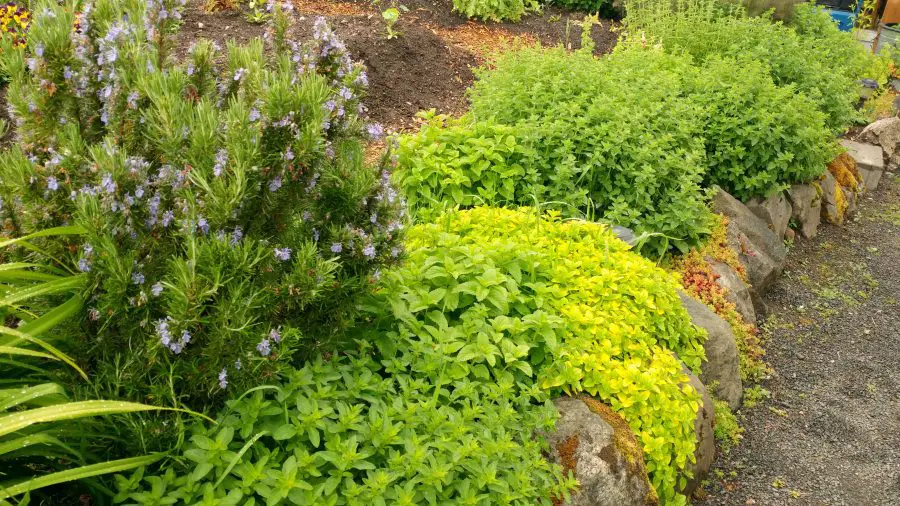
If you’re a fan of fresh herbs, why not create your own herb garden?
With the right location, soil, and care, you can grow a variety of herbs that will add flavor and aroma to your cooking.
In this section, we’ll explore the best herbs to grow in a garden, how to care for them, and tips for harvesting and preserving your herbs.
Planting a Vegetable Garden: Choosing the Right Crops and Companion Plants
If you’re interested in growing your own food, a vegetable garden might be just what you need.
But with so many types of vegetables to choose from, it can be hard to know where to start.
In this section, we’ll cover the basics of planting a vegetable garden, including how to choose the right crops for your space and how to use companion planting to promote healthy growth.
Creating a Flower Garden: From Annuals to Perennials, Tips for Success
A flower garden is a beautiful addition to any outdoor space, and with so many different types of flowers to choose from, the possibilities are endless.
In this section, we’ll cover the basics of planting a flower garden, including how to choose the right flowers for your space, how to care for them, and how to create a stunning and colorful display.
Building a Zen Garden: Elements and Design Ideas
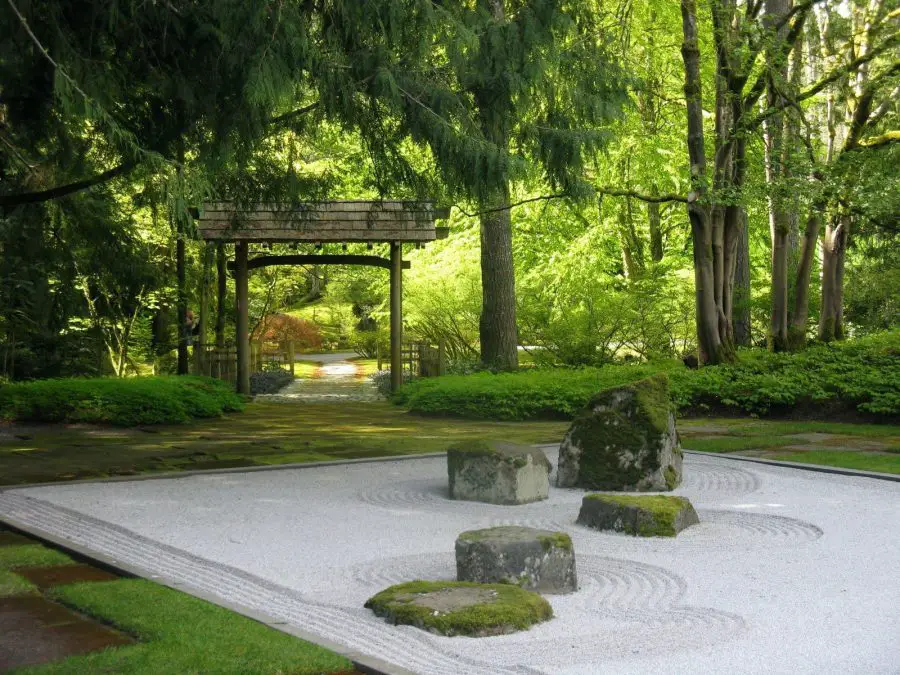
A Zen garden is a peaceful and serene space that can help you relax and unwind after a long day.
In this section, we’ll explore the elements of a Zen garden, including rocks, sand, and plants, and give you tips and tricks for creating your own Zen garden at home.
From Wikipedia:The Japanese dry garden (karesansui) or Japanese rock garden, often called a zen garden, is a distinctive style of Japanese garden. It creates a miniature stylized landscape through carefully composed arrangements of rocks, water features, moss, pruned trees and bushes, and uses gravel or sand that is raked to represent ripples in water. The Japanese dry garden (karesansui) or Japanese rock garden, often called a zen garden, is a distinctive style of Japanese garden. It creates a miniature stylized landscape through carefully composed arrangements of rocks, water features, moss, pruned trees and bushes, and uses gravel or sand that is raked to represent ripples in water.
Some Key Features And Tips For Building a Zen Garden
Building a Zen Garden, also known as a Japanese rock garden or Karesansui, can be a great way to create a peaceful and contemplative space in your backyard or outdoor area.
Here are some key features and tips to keep in mind when building a Zen Garden:
Minimalism: Zen Gardens are known for their simplicity and minimalism. They typically consist of gravel, rocks, and sand arranged in a way that mimics natural landscapes such as mountains, islands, and rivers.
Balance: Zen Gardens aim to create a sense of balance and harmony between the different elements. The rocks and other features should be arranged in a way that creates a sense of flow and continuity.
Proportions: It’s important to pay attention to the proportions of the different elements in the garden. For example, the size of the rocks should be in proportion to the size of the gravel or sand.
Raking: One of the key features of a Zen Garden is the raking of the sand or gravel to create patterns and textures. This is often done using a wooden rake or another tool.
Plants: While Zen Gardens are typically minimalist, you can still incorporate plants into the design. Choose plants that are simple and understated, such as bamboo, moss, or small shrubs.
Maintenance: Zen Gardens require regular maintenance to keep them looking their best. This includes raking the sand or gravel, removing debris, and trimming any plants.
Mindfulness: Zen Gardens are meant to be a space for contemplation and mindfulness. Take the time to sit and reflect in the garden, and allow yourself to be fully present in the moment.
By incorporating these key features and tips, you can create a beautiful and serene Zen Garden that will bring a sense of calm and tranquility to your outdoor space.
Creating a Water Garden: Types and Design Ideas
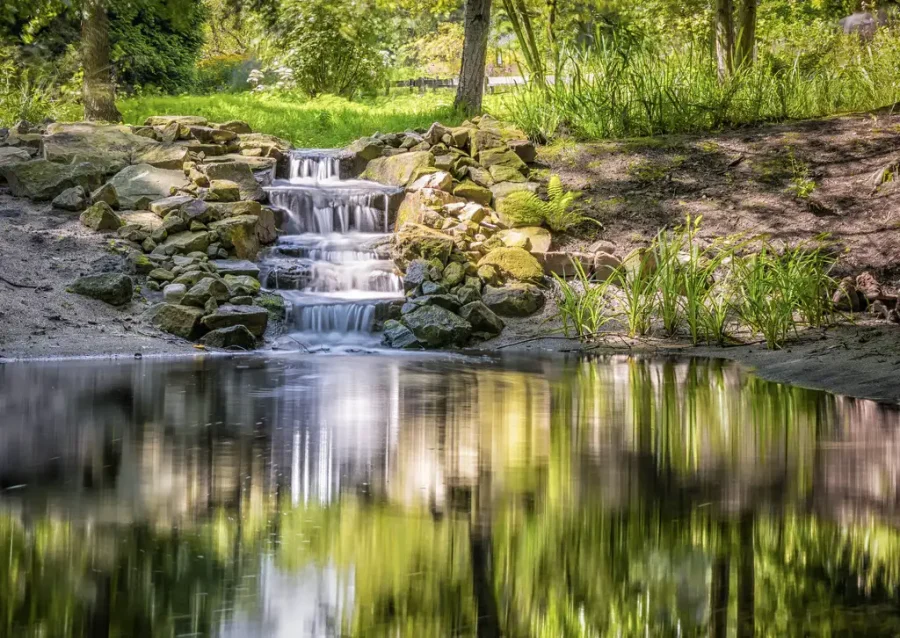
A water garden is a beautiful and tranquil addition to any outdoor space.
Whether you’re interested in a small pond or a large water feature, there are plenty of options to choose from.
In this section, we’ll explore the different types of water gardens and give you tips and tricks for designing and building your own water garden.
Some Key Features And Tips For Building A Water Garden
Building a water garden is a great way to add a peaceful and relaxing element to your outdoor space.
Here are some key features and tips to keep in mind when building a water garden:
Size and Location: The size and location of your water garden will depend on the available space in your yard and the type of plants and fish you plan to include. Choose a location that receives partial to full sunlight and is away from large trees that may drop leaves and debris into the water.
Design: The design of your water garden should be in harmony with the rest of your outdoor space. You can choose from a variety of shapes and styles, such as a natural pond or a formal fountain.
Materials: Water gardens can be made from a variety of materials, including concrete, fiberglass, and pre-formed liners. Choose a material that is durable and appropriate for your specific needs.
Water Features: Consider adding water features such as waterfalls, fountains, and streams to enhance the visual appeal and soothing sound of your water garden.
Plants and Fish: Choose aquatic plants that are appropriate for your climate and water conditions, such as lilies, lotus, and water hyacinths. Add fish, such as koi or goldfish, for additional interest and to help control algae growth.
Maintenance: Regular maintenance is essential to keep your water garden healthy and thriving. This includes removing debris, cleaning the filter, and checking the water quality.
Safety: If you have children or pets, it’s important to take safety precautions, such as installing a fence or covering the pond with netting to prevent accidents.
By incorporating these key features and tips, you can create a beautiful and tranquil water garden that will provide a relaxing oasis in your backyard for years to come.
https://www.indoorvegetablegrower.com/backyard-koi-pond-ideas/
FAQs on Backyard Gardening:
Having a backyard garden can be a rewarding experience, but it often comes with a set of challenges and questions. Here are some frequently asked questions to guide you on your gardening journey:
Q. How can I start a garden in my backyard?
A. Start by testing the soil to understand its quality and amend it if necessary.
Choose a site with good sunlight, plan your garden layout, and select plants suitable for your climate and soil type.
Begin with easy-to-grow plants and gradually expand your garden as you gain confidence.
Q. What are the best plants for a backyard garden?
A. The best plants for your garden depend on your local climate, soil type, and personal preferences.
Common choices include perennials like lavender and daylilies and annuals like petunias and marigolds.
For edibles, tomatoes, lettuce, and herbs like basil are popular choices.
Q. How can I maximize the space in my small backyard?
A. Utilize vertical space by installing trellises or vertical planters, choose compact or dwarf plant varieties, and consider container gardening.
Employing a tiered garden design or using hanging baskets are also effective ways to maximize space.
Q. How can I attract wildlife to my backyard garden?
A. To attract wildlife, plant native species which provide food and shelter for local animals.
Install bird feeders and bird baths, and consider adding a water feature or small pond to attract amphibians and insects.
Avoid using pesticides as they can be harmful to wildlife.
Final Thoughts On Backyard Gardening Ideas
Backyard gardening is a wonderful way to connect with nature, grow your own fresh produce, and create a beautiful outdoor space for relaxation and enjoyment.
Whether you have a large yard or a small balcony, there are many gardening options available to fit your needs and preferences.
By considering the factors outlined in this guide, such as location, plant selection, and sustainable practices, you can create a thriving and eco-friendly garden that brings joy and nourishment to your life.
Quick Recap:
In this guide, we covered a wide range of topics related to backyard gardening, including choosing the right location, selecting plants and materials, sustainable gardening practices, small space gardening, DIY projects, garden inspiration, and specialty gardens.
Each section provided valuable tips and advice for creating a successful and beautiful garden, no matter your level of experience.
Put Your Backyard Gardening Ideas Into Action
Don’t be intimidated by the idea of starting a garden – it can be a rewarding and enjoyable experience for anyone.
Even if you’re new to gardening, start small and learn as you go.
The satisfaction of growing your own food or creating a peaceful outdoor oasis is well worth the effort.
So grab a shovel, and some seeds, and get started on your backyard gardening journey today!
You Might Enjoy Growing These Plants
Astilbe In Pots:10 Easy Tips For Growing Astilbe In Pots
Grow Astilbe effortlessly in pots! 10 insightful growth techniques for feathery blooms.
https://www.indoorvegetablegrower.com/astilbe-in-pots/
Agapanthus Care In Pots: 7 Growth Tips For African Lilies
Revel in Agapanthus beauty with 7 growth tips. African Lilies in pots guide!
https://www.indoorvegetablegrower.com/agapanthus-care-in-pots/
Red Hot Poker Plant in Pots: 7 Easy Kniphofia Growth Tips
Ignite garden flair with 7 Red Hot Poker growth techniques. Kniphofia in pots mastered!
https://www.indoorvegetablegrower.com/red-hot-poker-plant-in-pots/
Bearded Irises In Pots: 10 Growth Tips For Iris Care In Pots
Cultivate Bearded Irises in pots. 10 essential tips for mesmerizing blooms.
https://www.indoorvegetablegrower.com/bearded-irises-in-pots/
Red Tip Photinia Privacy Hedge Growth Tips
Boost privacy with 13 growth tips for the vibrant Red Tip Photinia hedge.
https://www.indoorvegetablegrower.com/red-tip-photinia-privacy-hedge/
Here Are Some Backyard Plants You’ll Want To Grow
How To Grow Four O’Clocks In Pots 5 Easy Growth Tips
Unearth the secrets to flourishing Four O’Clock flowers in pots. This guide offers 5 foundational tips ensuring vibrant blooms every time.
https://www.indoorvegetablegrower.com/how-to-grow-four-oclocks-in-pots/
How To Grow Creeping Thyme: 9 Easy Thyme Growing Tips
Navigate the world of growing Creeping Thyme with this detailed guide. These 9 tips simplify the process, guaranteeing lush, aromatic success.
https://www.indoorvegetablegrower.com/how-to-grow-creeping-thyme/
How To Care For Verbena In Pots: 9 Easy Verbena Growth Tips
Embrace the beauty of Verbena by mastering its pot care. This detailed guide brings forth 9 critical growth techniques for vibrant blooms.
https://www.indoorvegetablegrower.com/how-to-care-for-verbena-in-pots/
Growing Ranunculus In Pots: 9 Growth Tips For Beginners
Dive into the mesmerizing world of Ranunculus. Newbies will treasure these 9 tips, laying the foundation for vibrant, consistent blooms in pots.
https://www.indoorvegetablegrower.com/growing-ranunculus-in-pots/
Growing Balloon Flowers from Seed: 17 Tips and Tricks
Embark on a journey from seed to bloom with Balloon Flowers. This in-depth guide offers 17 pivotal insights for cultivating these unique blossoms.
https://www.indoorvegetablegrower.com/growing-balloon-flowers-from-seed/
Growing Columbine In Containers: 11 Easy Growth Tips
Explore the charm of Columbines in containers. With 11 practical growth insights, this guide ensures spectacular blooms with minimal fuss.
https://www.indoorvegetablegrower.com/growing-columbine-in-containers/
Growing Dianthus In Pots: 7 Easy Pinks Growth Tips
Delight in the vibrancy of Dianthus ‘Pinks’. This guide simplifies their pot cultivation with 7 actionable tips, promising dazzling flowers each season.
https://www.indoorvegetablegrower.com/growing-dianthus-in-pots/
Growing Echinacea In Pots: 10 Coneflower Growth Tips
Discover the art of nurturing Echinacea in pots. With 10 insightful techniques, this guide ensures robust coneflowers that captivate and enchant.
https://www.indoorvegetablegrower.com/growing-echinacea-in-pots/
Growing Foxgloves in Pots: 5 Easy Growth Tips For Beginners
Step into the whimsical world of Foxgloves. Perfect for novices, this guide deciphers 5 essential steps to yield towering, bell-like blooms in pots.
https://www.indoorvegetablegrower.com/growing-foxgloves-in-pots/
Growing Goji Berries In Pots: 5 Easy Wolf Berry Growth Tips
Cultivate the power-packed Goji berries in pots. This guide demystifies 5 core techniques ensuring a bountiful harvest of these healthful berries.
https://www.indoorvegetablegrower.com/growing-goji-berries-in-pots/
Growing Mandevilla Vine In Pots: 10 Easy Tips For Beginners
Embark on the tropical journey of Mandevilla vines. Newcomers will value these 10 pivotal steps, promising a cascade of vibrant blooms in pots.
https://www.indoorvegetablegrower.com/mandevilla-vine-in-pots/
Growing Penstemon In Pots: 5 Easy Growth Tips For Beginners
Dive deep into cultivating Penstemon’s vivid blossoms. This guide, tailored for newcomers, offers 5 vital insights for flourishing growth in pots.
https://www.indoorvegetablegrower.com/growing-penstemon-in-pots/
How To Care For Calibrachoa Hanging Baskets: 7 Easy Care Tips
Elevate your space with Calibrachoa in hanging baskets. This guide imparts 7 essential care tips, ensuring vibrant, cascading floral displays.
https://www.indoorvegetablegrower.com/how-to-care-for-calibrachoa-hanging-baskets/
How To Care For Lantana In Pots: 9 Easy Tips For Beginners
Revel in the multicolored splendor of Lantana. This beginner-friendly guide reveals 9 foundational techniques for thriving blooms in pots.
https://www.indoorvegetablegrower.com/how-to-care-for-lantana-in-pots/
Forget-Me-Not Flowers In Pots: 9 Easy Care Tips
Cherish the delicate charm of Forget-Me-Nots in pots. Unlock 9 simple care tips to ensure these perennial blooms continue to enchant.
https://www.indoorvegetablegrower.com/forget-me-not-flowers-in-pots/
Creeping Jenny In Pots: 13 Lysimachia nummularia Growth Tips
Explore the cascading allure of Creeping Jenny. With 13 essential tips, ensure the Lysimachia nummularia thrives and drapes beautifully in pots.
https://www.indoorvegetablegrower.com/creeping-jenny-in-pots/
Coreopsis in Pots: 7 Easy Growth Tips For Beginners
Embrace the cheerful vibrancy of Coreopsis. Tailored for novices, this guide imparts 7 foundational tips to guarantee flourishing flowers in pots.
https://www.indoorvegetablegrower.com/coreopsis-in-pots/
Pugster Butterfly Bush Care: 7 Dwarf Buddleia Tricks In Pots
Revel in the compact beauty of the Pugster Butterfly Bush. Seven tailored tricks guide you in cultivating Dwarf Buddleia in pots.
https://www.indoorvegetablegrower.com/pugster-butterfly-bush-care/
How to Grow Toad Lily: 7 Easy Growing Tips For Beginners
Unveil the unique beauty of the Toad Lily. With seven beginner-friendly tips, ensure its intricate blooms grace your garden effortlessly.
https://www.indoorvegetablegrower.com/how-to-grow-toad-lily/
Hydrangea Care In Pots: 15 Easy Hydrangea Care Tips
Elevate your potted plant game with the iconic Hydrangea. Fifteen vital care tips ensure robust blooms and foliage, even in confined spaces.
https://www.indoorvegetablegrower.com/hydrangea-care-in-pots/
Japanese Anemones In Pots: 6 Easy Growth Tips For Beginners
Discover the delicate charm of Japanese Anemones in pots. Six foundational tips guide beginners in nurturing these graceful blooms.
https://www.indoorvegetablegrower.com/japanese-anemones-in-pots/
How To Plant Creeping Phlox: 12 Easy Phlox Growth Tips
Dive into the cascading beauty of Creeping Phlox. Twelve actionable tips await to ensure vibrant carpet-like blooms in your garden.
https://www.indoorvegetablegrower.com/how-to-plant-creeping-phlox/
Ice Cream Banana Tree Care 15 Tip Complete Growth Guide
Savor the unique sweetness of the Ice Cream Banana. This 15-tip guide offers comprehensive care directions for flavorful fruiting success.
https://www.indoorvegetablegrower.com/ice-cream-banana-tree-care/
Lantana Care In Pots: 15 Easy Tips And Tricks For Beginners
Explore vibrant Lantana growth in pots. Fifteen foundational pointers, ideal for beginners, illuminate the path to blossoming brilliance.
https://www.indoorvegetablegrower.com/lantana-care-in-pots/
Lobelia Care In Pots: 9 Easy Growth Tips For Beginners
Dive into the serene beauty of Lobelia. With nine beginner tips, embrace the joy of nurturing its vibrant cascades in pots.
https://www.indoorvegetablegrower.com/lobelia-care-in-pots/
Growing Camassia in Pots: 5 Easy Growth Tips for Camas Bulbs
Discover the joy of growing Camassia in pots with our comprehensive guide! https://www.indoorvegetablegrower.com/growing-camassia-in-pots/
How to Plant Hyacinth Bulbs in Pots
Looking to add a burst of color and fragrance to your space? Learn how to plant hyacinth bulbs in pots
https://www.indoorvegetablegrower.com/how-to-plant-hyacinth-bulbs-in-pots/

